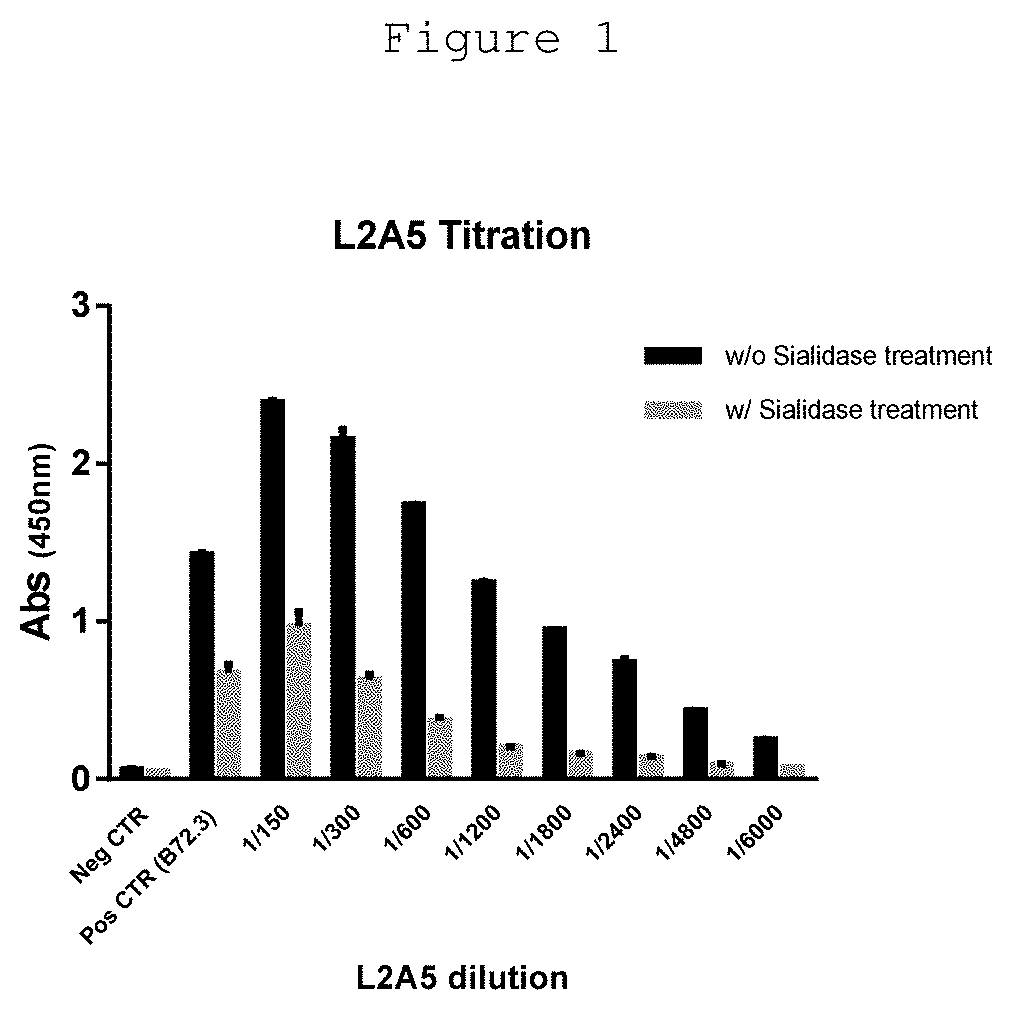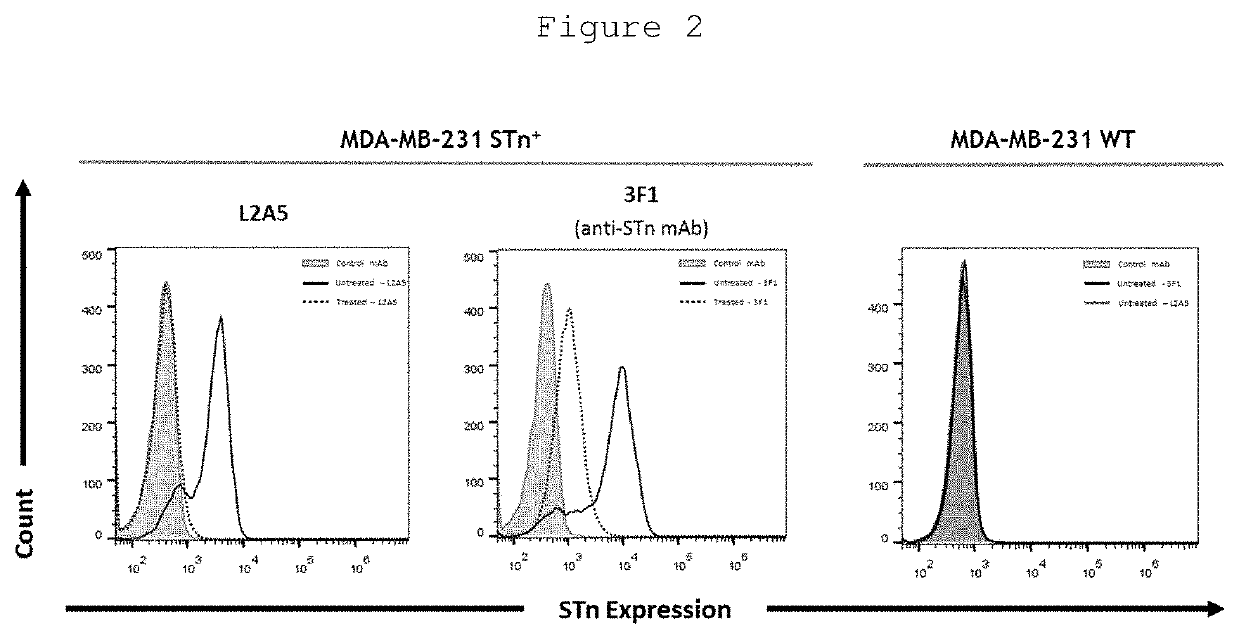L2a5 antibody or functional fragment thereof against tumour antigens
a technology of tumour antigen and functional antibody, which is applied in the field of antibodies or functional antibodies, or probes thereof, can solve the problems of limited number of treatments, serious side effects in some people, and immune checkpoints that do not provide immediate anti-tumour response, etc., and achieves less sensibility, strong intensity, and high extension
- Summary
- Abstract
- Description
- Claims
- Application Information
AI Technical Summary
Benefits of technology
Problems solved by technology
Method used
Image
Examples
examples
[0112]The following examples are provided merely as illustrative of various aspects of the present disclosure and shall not be construed to limit the disclosure in any way. They relate to the antibody characterization, selection and production.
example i
Antibody Production—Immunizations
[0113]Exemplary methods of producing antibodies are provided, but any other standard method can be used.
[0114]Monoclonal antibody (mAb) production was performed according to the hybridoma technology. Female Balb / c mice aged 6 weeks (Harlan, UK) were immunized intraperitoneally with 10 μg of ovine submaxillary mucin (OSM) emulsified 1:1 (V / V) with complete Freund's adjuvant (Sigma-Aldrich) followed by 2 additional injections of OSM emulsified with incomplete Freund's adjuvant (Sigma Aldrich) with intervals of 21 days. Blood samples were collected from the mice cheek and collected serum was screened for STn binding specificity by ELISA. If the serum showed the desired and specific immune response, a final boost injection to the corresponding mice would be performed three days before killing and harvesting the spleen.
example ii
ELISA
[0115]Mouse serum titrations and screening of hybridoma supernatants were determined by ELISA against bovine submaxillary mucin (BSM), a STn-expressing protein. The wells of a 96-well plate were coated with 50 μl of BSM (3 μg / ml) dissolved in Phosphate Buffered Saline (PBS) and incubated overnight at 4° C. To assess the specific binding of screened hybridoma supernatants to sialylated structures, 50 μl of sialidase, from Clostridium perfringens (Roche) at 25 mU / ml diluted in sialidase buffer (10 mM Na2HPO4, pH=6.0) was added to a subset of wells and incubated for 90 min at 37° C. After sialidase treatment, the plates were washed three times with PBS containing 0.05% Tween 20 (PBS-T) followed by blocking with 5% skim milk powder, for 60 min. After PBS-T washes, diluted mouse sera or hybridoma supernatants were added to the wells and incubated for 90 min. Plates were washed four times with PBS-T, followed by incubation with horseradish peroxidase (HRP)-conjugated goat anti-mouse ...
PUM
 Login to View More
Login to View More Abstract
Description
Claims
Application Information
 Login to View More
Login to View More - R&D
- Intellectual Property
- Life Sciences
- Materials
- Tech Scout
- Unparalleled Data Quality
- Higher Quality Content
- 60% Fewer Hallucinations
Browse by: Latest US Patents, China's latest patents, Technical Efficacy Thesaurus, Application Domain, Technology Topic, Popular Technical Reports.
© 2025 PatSnap. All rights reserved.Legal|Privacy policy|Modern Slavery Act Transparency Statement|Sitemap|About US| Contact US: help@patsnap.com



